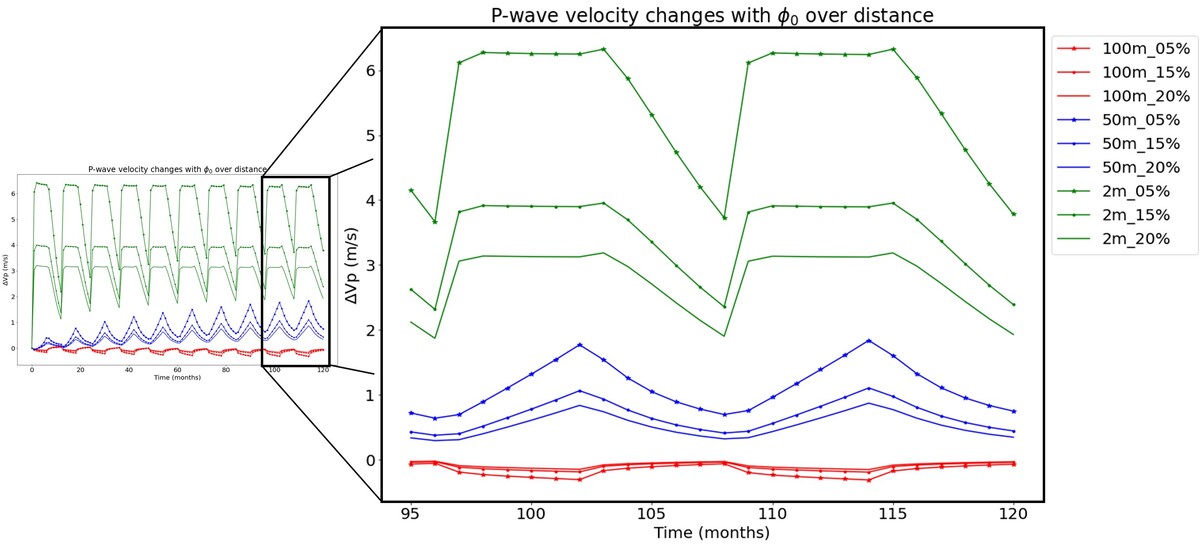Geophysical monitoring of deep aquifer thermal energy storage systems
Supervisor: Emmanuel Gaucher
Person in charge: Clara Eugenia Fraile Mujica
The energy mix is a very important topic in today's society. Heating and cooling of buildings demands a large percentage of the available energy. Therefore, reliable sources of energy are key in order to move from fossil to renewable energies. Underground heat storage can be a sustainable option to decrease the need for conventional sources of energy while meeting the heating needs. Particularly, high-temperature aquifer thermal energy storage (HT-ATES) is gaining attention, as it allows to store excess heat available in Summer so that it can be used over the Winter months, when the heat demand is higher. In HT-ATES systems, warm water is injected into a reservoir over the hot months (Summer). During the cold season, the stored warm water is produced for heating purposes and cold water is injected to the reservoir.
Monitoring property changes in a reservoir is key to run it safely and efficiently. Before designing a monitoring network, it is necessary to understand the processes of the system and its expected responses. In the case of heat storage systems, the heat and pressure variations will introduce changes in the geomechanical properties of the rocks. These parameter changes should be reflected in the seismic velocities of the reservoir layers, as they are sensitive to the elastic moduli, the fluid content and the porosity of the rocks.
This Ph.D. study aims to investigate active seismic surveys capabilities to monitor HT-ATES systems, with a big focus on its feasibility on the Upper Rhine Graben (URG). The thesis is divided in 2 main sections: 1- the development of a HT-ATES reservoir numerical modelling to quantify the expected changes and 2- a full wave modelling simulation and inversion to image the reservoir changes and propose an appropriate seismic survey.


